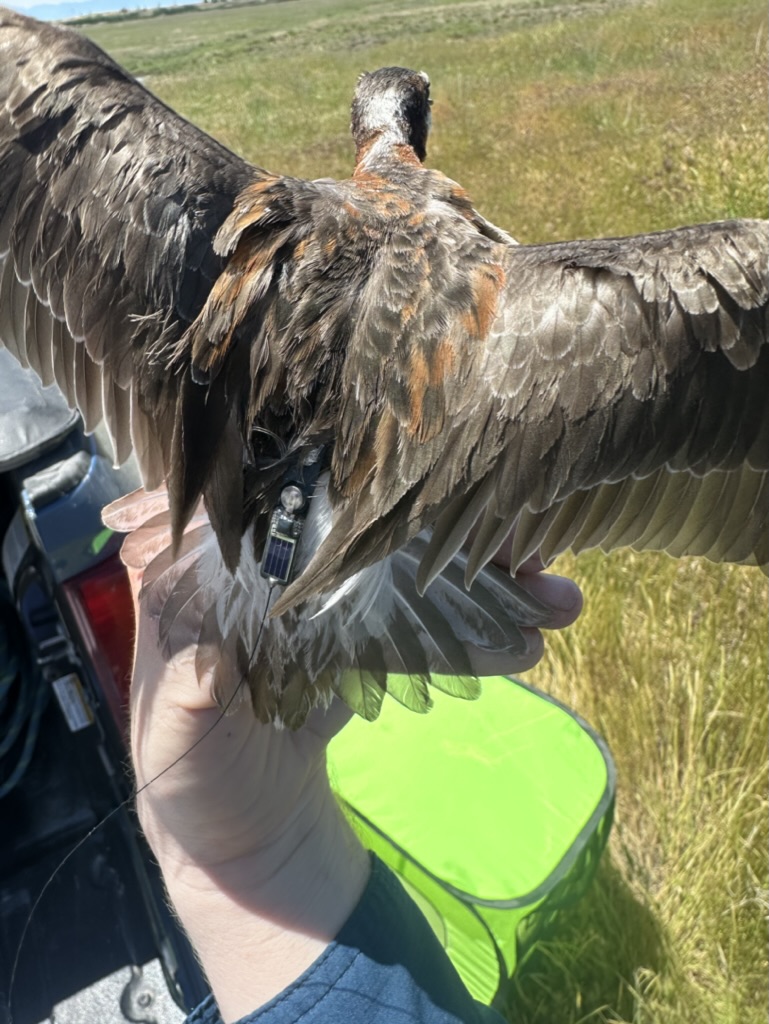The Aquarium’s MOTUS Tower Pings Five Birds MOTUS, which is Latin for motion or movement, is a radio tower that is currently sitting on top of Loveland Living Planet Aquarium’s roof. But why is it there? And what does it do?
The MOTUS Wildlife Tracking System is an international collaborative research network that uses coordinated, automated radio telemetry to facilitate research and education on the ecology and conservation of migratory animals. MOTUS is a program of Birds Canada in partnership with collaborating researchers and organizations. MOTUS systems pings tagged birds, bats, or insects that fly within a 15-kilometer radius of any MOTUS antenna. When these birds are pinged, the Aquarium gets notified of certain information about the creature like their species, when it was pinged, its flight pattern, how many other stations it has visited, and more.

MOTUS is a great resource to not only us but other organizations. There are 34 countries where MOTUS towers are located with just over 2,000 stations in total. From those towers, there have been over 50,000 animals tagged.
One of the main goals when using the MOTUS tracking system is conservation. Because it can track flight patterns, this helps researchers and conservationists to become more educated on a species’ migration pattern, the movement seen in the organisms during the breeding season, and possible areas they are moving to that require extra protection. This program is a cost-effective and collaborative way to gain more knowledge and research opportunities.
Another important part of MOTUS’s success is the tagging process that has to happen before a bird or insect can get detected on a tower. Thanks to efforts made by The Division of Wildlife Resources and donations from other organizations, tagging was able to be done right here in Utah! In this area, the main focus was waterfowl like mallards or teals.
There are a couple of different ways to tag a bird, but the most common practice is to tie the tag onto one of the bird’s legs. This tag does not impede their ability to fly whatsoever and is actually solar-powered to ensure there is no need for extra maintenance after they are tagged.
All of these reasons are especially important for us here in Utah, due to the various wetland habitats like the Great Salt Lake that are home to many species of birds and insects, some of which are endangered and facing habitat destruction.
As for our specific MOTUS tower, we are excited to say we have pinged five birds so far since its installation in January! The first bird that we pinged was a Wilson’s phalarope, which is a type of small shorebird. It was pinged on July 29, 2024. It came all the way from Canada before heading here to The Great Salt Lake.

We also pinged four cinnamon teals, a species of duck, in the last two months. We saw an uptick in MOTUS pings recently most likely due to it being migration season. After the cinnamon teals visited us in Utah, they began their journey to San Diego, California to soak up the sun before it snows here. Loveland Living Planet Aquarium is thrilled to be a part of conservation efforts like these. Stay tuned for updates on our social media platforms as our MOTUS tower pings more creatures!

